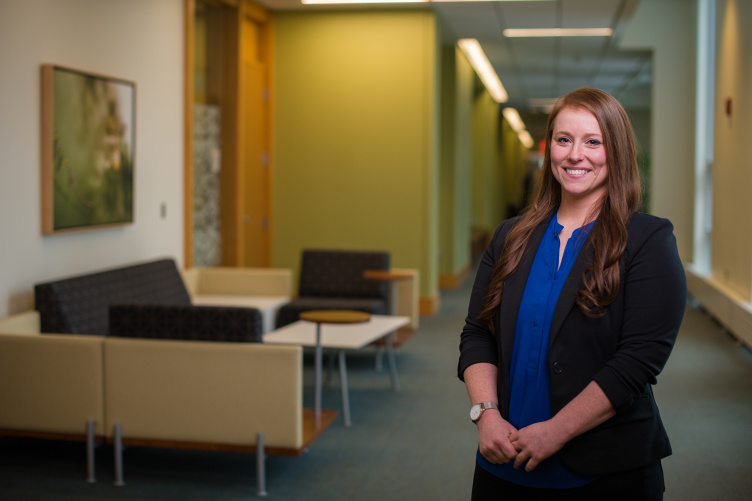
Jennifer Griffith is fascinated by the psychosocial issues that get in the way of good decision making, including emotions but also bias, perception, and that old standby, inertia. One workplace issue, sexual harassment, touches on all of these factors.
That’s why Griffith, an assistant professor of organizational behavior and management who has co-authored more than a dozen papers over the past few years, eagerly anticipates the 2019 publication of her most recent study: a review of sexual assault and harassment prevention training initiatives. Not only is the paper topical and timely, it is also pioneering. It was chosen as a focal article that will appear in Industrial and Organizational Psychology: Perspectives on Science and Practice (IOP), a journal well known for bridging the gap between research and application by inviting commentary from practitioners and researchers to accompany each article.
“This is an important dialogue to open up,” Griffith says. “We want to include both sides of the house.”
The crux of her study’s conclusions is that businesses can learn a lot from the sexual assault and harassment prevention programs that universities have implemented for student populations.
“First, effective training is more immersive and takes place over several weeks or even months. Second, there is more commitment to measurement,” says Griffith, who evaluated more than 30 years’ worth of peer-reviewed research on sexual assault and harassment prevention programs on college campuses. “Unless you follow up programs with detailed surveys or other instruments, you don’t know whether a change in attitude has stuck.”
By contrast, companies tend to minimalize interventions—either by limiting them to a single (often agonizing) meeting format or online. Furthermore, companies are reluctant to share their practices or results with the public, resulting in a dearth of academic literature pointing the way to best practices.
Griffith hopes the IOP article can break through this reticence and open pathways for collaborations between academics and practitioners.
The need for collaboration is both urgent and challenging.
“Sexual harassment differs in some ways from other kinds of discrimination,” Griffith says. “There’s a perception that there’s more wiggle room for what’s acceptable and who ‘fits’ within an organization—it’s common to hear ‘If you don’t like our culture, you shouldn’t work here.’”
Finally, addressing sexual harassment is emotional. From a leadership perspective, emotion equals conflict, and that, says Griffith, is something leadership prefers not to dwell on.
“Leaders think conflict is bad, but it’s not always bad” she says. “When an organization helps employees deal with it, they feel closer and perform better. Who wouldn’t want that?”
-
Written By:
Dave Moore | Freelance Writer



















































